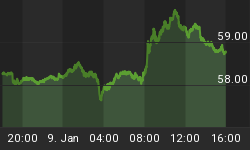When you're caught in the middle of a bad storm, you don't really care whether it's a tropical depression or a full-strength hurricane. You just know you're hanging on for dear life. The same idea applies to financial markets. When a market is trending up strongly, it's hard to tell whether it's just a bull market or a more dangerous financial mania.
The recent tremendous ride up for global and U.S. financial markets, including the Dow, looks and feels more like a mania than a mere bull, says Elliott Wave International analyst Peter Kendall. This distinction is important to recognize in the rising stage, because manias always result in a crash that takes them back beneath their starting point.
Kendall recently published his research into current financial manias throughout the world in SFO (Stocks, Futures and Options) magazine. The article, titled "Financial Manias and the Trade of a Lifetime," suggests an even more stunning finish for the current manias: "The speed and global scope of the unfolding credit crisis suggest that most of the fast-rising markets of the last decade will crash in unison," he writes.
Editor's note: Elliott Wave International invites you to read the full five-page article with charts from the October 2007 SFO magazine by Elliott Wave International's Pete Kendall called "Financial Manias and the Trade of a Lifetime."
As co-editor of The Elliott Wave Financial Forecast, Kendall searches for trends that help traders to move in and out of markets. By comparing other historic manias with the impressive rise of the DJIA since the late 1970s, he focuses on the skyscraper pattern that they all have in common. The four historical manias are the Dutch Tulip mania of the 1630s, the South Sea bubble of 1720, the U.S. stock crash of 1921-1932 and the dot.com bust of the 1990s and early 2000s. Once you can see the similarities, you will be better prepared to face the music when the crash comes. As Kendall writes, "once the belief that the markets will always rise becomes widespread, it actually signals the start of a price swing that tends to be a career-breaker for any trader who tries to oppose it."
He also discusses current manias, such as the Nikkei, which has yet to return to its start after a manic rise to its all-time high in December 1989, and the Dow, which reversed from its rise in 2000 but made a U-turn in 2002. The starting point for the Dow's mania as shown in the chart included in the article is at the 1000 level.
Kendall, who is also writing a book about financial manias, titled The Mania Chronicles, describes five telltale signs that help an investor to tell the difference between a regular bull market and a mania. It's a mania if:
1. There is no upside resistance, and rising prices seem to be perpetual.
2. Everyone in the market looks like an expert.
3. There is a flight from quality investments to riskier investments.
4. As financial bubbles pop in one area, they bubble up in others.
5. The crash after the peak takes back all the gains the mania made.
No. 5 can be viewed only with hindsight. But the first four signs provide essential clues to what's shaping up in the markets.
"By studying past mania experiences, traders can gain valuable insight into the collective emotions that drive their markets," writes Kendall. "It's possible to make significant money in the advancing stages of a mania with no knowledge of its existence. But there is nothing like recognizing a mania for what it is in real time to help a trader keep those gains and deal with the relentless crash after it peaks."
In the last part of the SFO article, he asks the key question, Are we at the peak yet? Find out his answer by reading the whole article for yourself.















